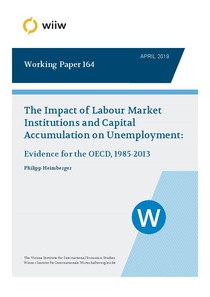The impact of labour market institutions and capital accumulation on unemployment: evidence for the OECD, 1985-2013

Vienna Institute for International Economic Studies
WIIW - Vienna
2019
34 p.
labour market policy ; unemployment ; macroeconomics
Working Paper
164
Labour market
English
Bibliogr.
"This paper provides econometric evidence on the impact of labour market regulations on (‘structural') unemployment rates. Based on a data set for 23 OECD countries over the time period 1985‑2013, the panel regression results suggest that standard institutional labour market indicators – such as employment protection legislation, trade union density, tax wedge, minimum wages – largely underperform in explaining (medium-term) unemployment, while cyclical macroeconomic factors – in particular capital accumulation, but also the long-term real interest rate – are essential determinants. These results underscore that the existing macroeconometric evidence in favour of the view that labour market rigidities are at the heart of increased ‘structural' unemployment in advanced economies is modest at best. Some labour market variables do have an impact on unemployment, but it is in general smaller than the impact of relevant macroeconomic variables. To understand the development of unemployment in OECD countries, researchers and policy-makers therefore should consider aggregate demand dynamics and focus on capital accumulation."
Digital
The ETUI is co-funded by the European Union. Views and opinions expressed are however those of the author(s) only and do not necessarily reflect those of the European Union or the ETUI.